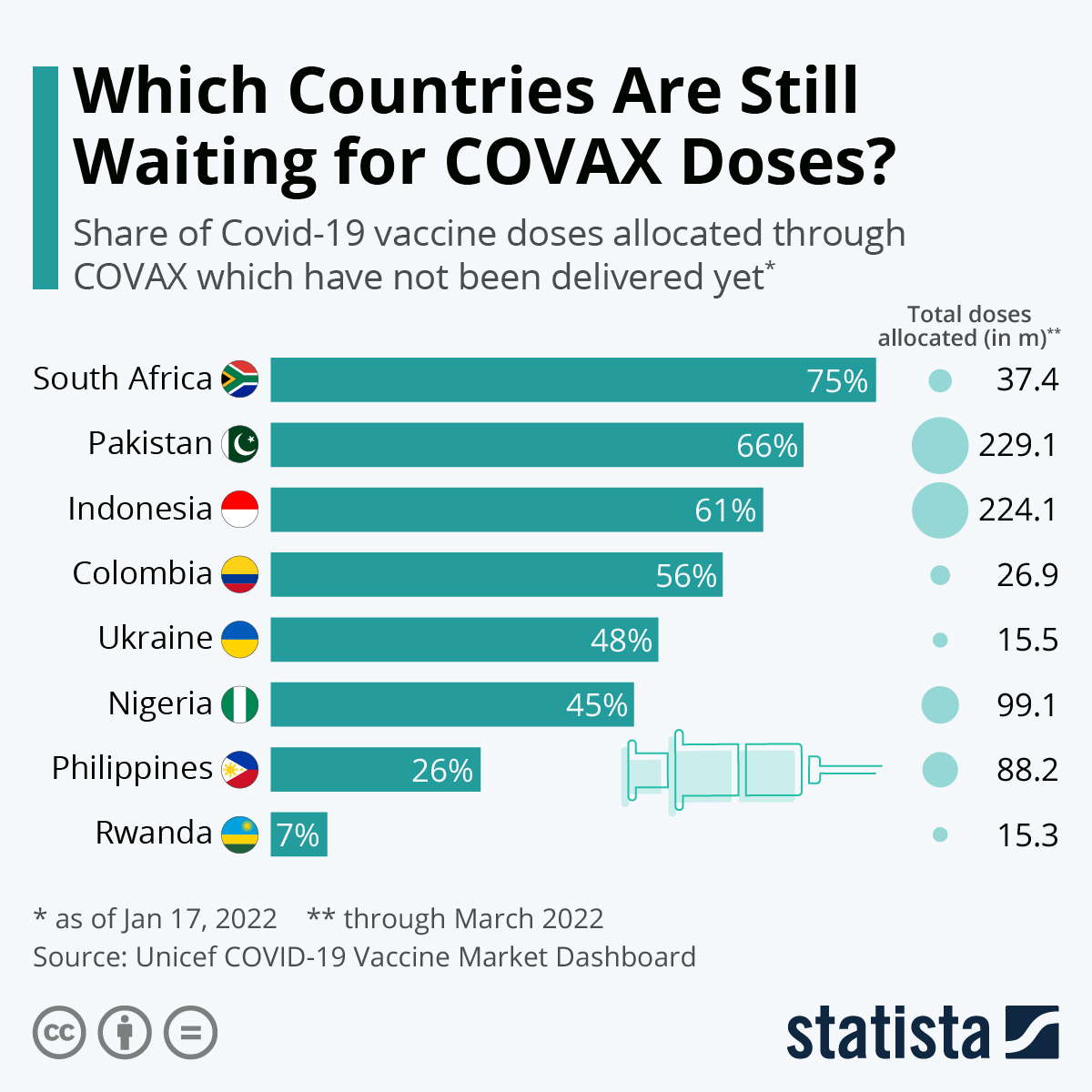
Vials of Johnson & Johnson’s Janssen COVID-19 vaccine candidate seen in this undated photograph. Photo: Johnson & Johnson/Handout via Reuters
Deliveries by COVID-19 Vaccines Global Access – or COVAX – started up at the end of February but have already hit a snag after only approximately 32 million doses shipped.
India, which delivers domestically made doses of the AstraZeneca vaccine under the COVAX initiative, has slowed down exports after a new wave of infections in the country made the government consider using the vaccines on its own citizens first.
The initiative, which aims to provide equitable access to COVID-19 vaccines, is planning to ship out almost 188 million doses of vaccines until the end of May, mainly from India and South Korea.
As seen in the chart that shows deliveries between February 24 and March 25, COVAX beneficiaries supplied by India had previously received more generous allotments of vaccines than those supplied by South Korean contractor SK Bioscience. But because of the holdback, that could now change.
Among the 10 biggest beneficiaries of the initiative, Nigeria has received the largest delivery. The 3.9 million doses shipped on March 2 make up approximately 30% of the vaccine doses pledged for delivery to the country until the end of May. Shipments to Ethiopia and the Democratic Republic of the Congo were equally large in relation to expected shipments over this time period.
In comparison, deliveries to Indonesia, Brazil and the Philippines made up only between 9% and 11% of the delivery pledge. All three countries have received additional doses outside of COVAX, but amounts differ.
Indonesia has received at least 38 million doses which were purchased from China (14 per 100 population), and Brazil has so far had access to approximately 20 million doses of the Chinese SinoVac variety, which is produced locally in part (9.5 per 100 population). The Philippines, on the other hand, are expecting to have received 2 million doses from China by the end of the month (1.8 per 100 population) on top of the COVAX allocation.
Some countries that have received none of their COVAX allotments so far have also purchased substantial amounts of vaccines, among them Bangladesh and Mexico. Others, like Egypt and Pakistan, have received very few additional doses relative to their population size. Because India is a producer and recipient under COVAX, it is treated differently by the initiative. While no definite allocation until the end of May has been made, UNICEF lists 10 million doses as delivered to India under COVAX as of March 25. Eventually, the country is expected to emerge as the biggest COVAX recipient, however.
For qualifying countries, COVAX provides vaccine doses for 20% of the population for free. Donor countries as well as qualifying countries can also choose to purchase additional doses through the initiative.
 This article was first published on Statista, where you will find more infographics.
This article was first published on Statista, where you will find more infographics.

